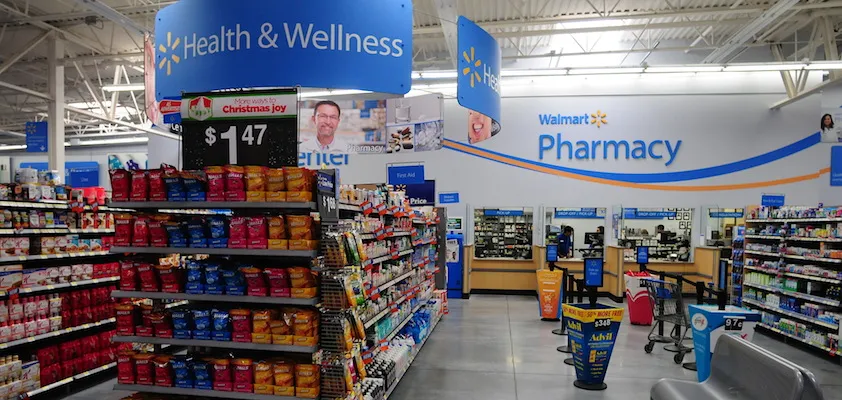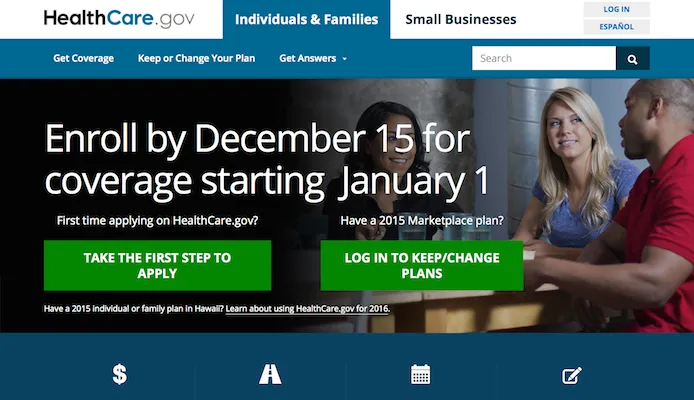One of the most dramatic changes in global business over the past few decades is the growth of organized retail in developing markets and the expansion of global retailers in general.
Since Walmart opened its first store outside the United States in 1991, retailers in many sectors have discovered new markets around the world, and it is still big news for hypermarket, luxury, apparel, convenience and quick-serve restaurants.
So far, retail pharmacies haven’t had the same attraction to global expansion. But now the chain drug store industry is looking beyond North America for all manner of growth ideas to make the transition from provider of pills to retailer of healthy living.
The recent completion of the Walgreens and Alliance Boots merger is the most visible example, and another is CVS’ operations in Brazil with Drogaria Onofre. Even McKesson’s completion of the Celesio acquisition shows how internationalization is becoming more relevant to chain pharmacy. While setbacks such as Target’s failed foray into Canada, Tesco’s exit from California and Walmart’s challenges in Germany and South Korea can inject an air of caution into retail globalization, the endless forces of “grow or die” will prove as irresistible to retail pharmacy as they have for the rest of the retail marketplace.
In this first article in a series on international retail, we offer North American chain pharmacy executives some important considerations as they evaluate investment trade-offs and ambitions.
We begin with a framework for thinking about global retail and then discuss the strategic questions executives and boards should ask when considering investing in markets beyond North America.
Global Retail Development Index
Each year in June, A.T. Kearney publishes the Global Retail Development Index (GRDI), a study of developing markets — markets where consumer wealth and spending are increasing, where government regulation supports (or at least doesn’t block) foreign investment, where land and labor are increasingly available to foreign companies, and where logistics make modern organized supply chains possible.
The GRDI addresses many of the questions that global retailers and those thinking about going global ask as they develop strategies. The index serves as a powerful analytical framework to help think about global retail.
The challenge of analyzing global retail is not just big data — it’s big, bad data. Some of the highest-potential markets in the world have almost no real consumer data. For example, despite the keen interest in African population centers, there is no comprehensive city map of Lagos, Nigeria. Similarly, consumer data for the Democratic Republic of Congo is so routinely unavailable that most global agencies don’t even include the country in their reports. These are significant omissions considering that these two countries together are expected to have more than half a billion people in 2050.
So our first recommendation in the face of this big, bad data challenge is this: Don’t try to analyze it by yourself. There are many qualified and validated data sources — including the United Nations, the World Economic Forum, the World Health Organization and the World Trade Organization — that can help get you started. However, even these excellent sources don’t agree on straightforward things such as country names or their own sources for data such as population, market size and growth.
Other organizations, such as A.T. Kearney’s Global Consumer Institute or Top Right Group’s Planet Retail, can take much of the noise out of the data. Homologation of data from various sources is something management consultants do — and that’s what the GRDI does as our investment in our retail clients’ success.
The GRDI comprises four variables, each weighted at 25%: market attractiveness, risk, market saturation and urgency. A country with a large market, low-risk, emerging saturation, and high urgency in retail growth will score high. The index gives users insight into overall trends and sub-factor trends and allows executives to quickly scan the globe to monitor developments in selected markets.
Let’s take a closer look at each variable. First, market attractiveness combines a country’s wealth, growth and population. China and India have large populations, and the United States and Germany have great wealth — but what’s next? Which markets have small populations but are great places to get started, so you can understand the culture and the consumers?
It turns out that Uruguay is often of interest to retailers seeking expansion. It is a tourist destination for both Argentinians and Brazilians, and because of taxation and the way people spend when they are on holiday, it’s an exciting retail market. In recent years, small regional players such as Uruguay and Chile have featured prominently in the GRDI. Similarly, the United Arab Emirates and Qatar among the Gulf states have top market attractiveness scores.
Second is risk — specifically, country and business risk.
As an example of country risk, take Iran or Afghanistan: They tend to drop off most company lists of the next place to go. The position of those nations’ political leadership in the context of the global geopolitical environment is simply too uncertain.
Business risk is typically a more complex issue to analyze for many executive groups. To illustrate, consider how your executives are treated when corporate tax issues arise, or whether you’re required to have a local partner. As one leading global retailer told us, “If I can’t open a store without giving someone a bribe, and I can’t keep it open every year without bribing someone else, then I’m not going to invest there.”
Although we use illustrations here, the GRDI uses data-based scores to compare and contrast countries.
Third is market saturation. This describes what is happening in the market now. As developing markets go from open markets (also known as “wet markets” in food retail) to organized retail, we seek to understand how consumers are shopping and how quickly that is changing.
To understand saturation, consider China. It took many years to convince shoppers there to buy chilled or frozen fish and chicken because they were used to buying live animals. Carrefour convinced them — although for many years, there were ice-filled “caskets” with live fish alongside the chilled and frozen display cases. Then there is a tipping point where you have to ask how many retailers are doing the same thing you are hoping to do. This is where saturation scores really rise.
The final factor is urgency, which is the variable that forecasts what the markets will look like in the future. Mathematicians would call this a second-derivative variable, because it describes how things are changing.
Statistically, the GRDI compares growth in retail sales against overall economic growth and expansion of organized retail. We also measure which global retailers are entering the market to provide a sense of the attention the market is receiving.
For example, when Walmart bought Massmart, and the retailer was — in a flash — in 13 country markets in sub-Saharan Africa, just about every global, regional and local retailer had a feeling about what this meant, and urgency shot up overnight.
Strategic questions
Of course, there are other questions you and your board must discuss to determine if a foray into the global retail market makes sense for your company.
Four topics rise to the top:
• Passion — Assuming you love your brand, your system, what you do and how you do it, can you take that emotion and communicate it in Qatar? in Indonesia? Certainly you have learned how to thrill your shopper in your home market. But is your passion for your brand and system strong enough to convince consumers in other markets? Finding the right match with a market is crucial.
• Genius — Who is your genius leader when establishing foreign outposts? Without a doubt, succeeding on a global stage requires not only a genius leader but also a specific, lunatic-style genius who cannot rest until he or she has taken the banner to Nepal and Neptune. They may not succeed everywhere (nobody does), but crazy genius is an essential ingredient for global retail success. If you don’t see your crazy genius at the board room table, then you don’t have one. This person provides the insight, confidence and energy to get moving and sustain energy when difficulties arise.
• Respect — Do you understand and respect your target shopper? When any company goes international, it is seductive to think consumers are just waiting for your banner to arrive. This is not true. And once that untruth is realized, a comforting yet false assumption often emerges that the target population is not as advanced as the home population — and that’s not true either. For example, consumers in Nigeria and Brazil are much more connected online than consumers in Germany and Japan. They are more involved in social media, seeking out their friends’ opinions — and freely offering their own opinions — about your company if you are there. If you ever thought you could take last year’s format or assortment to a developing market, think again. Make certain you respect the target shopper.
• Self-knowledge — The fourth strategic question asks how well a company knows itself. Many try to go global because they are ambitious, bold and aggressive, but they can become arrogant — and then fail. There is no one right strategy. Tesco, Walmart, Carrefour and Metro — the big-box big four — each has very different strategies and cultures, and yet each has had both dramatic successes and dreadful experiences. Despite the failures, the revenue and profit growth from their out-of-home-market investments outstrips their in-home-market investments three to one after the settling-in time.
Knowing yourself is perhaps the biggest challenge. You don’t want to cheat your brand or your banner — and you certainly don’t want to let consumers down. As you go international, there will be many regulatory, cultural, financial and logistical obstacles, but there are also many ways that consumers think about pharmacy and convenience around the world — and myriad complex regulatory systems and reimbursement methods to consider. But knowing — really knowing — that you can embrace the world globally? Well, that’s pretty exhilarating.
It’s a big world with many shoppers who want to buy the things you sell. Knowing where and when to go is essential. Let’s get going.
Mike Moriarty is a partner with A.T. Kearney’s Consumer Products and Retail Practice. Based in Chicago, Mike can be reached at mike.moriarty@atkearney.com. Todd Huseby, also a partner with A.T. Kearney and based in Chicago, is a member of the firm’s health and strategic IT practices. He can be reached at todd.huseby@atkearney.com.








